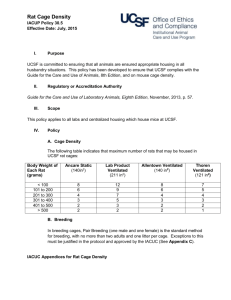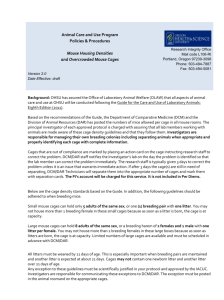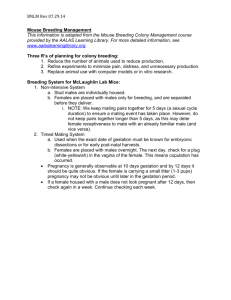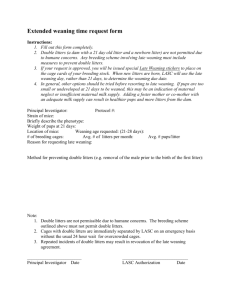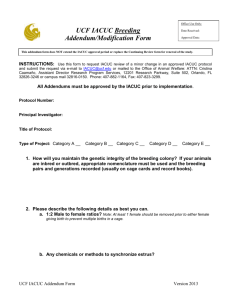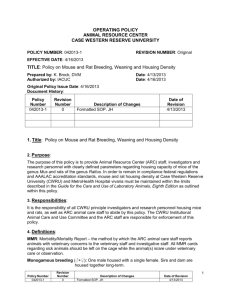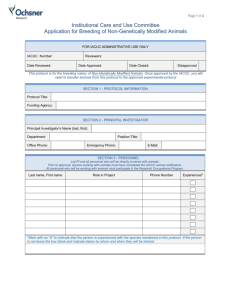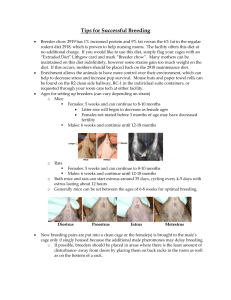Mouse Cage Density - UCSF Animal Care and Use Program
advertisement
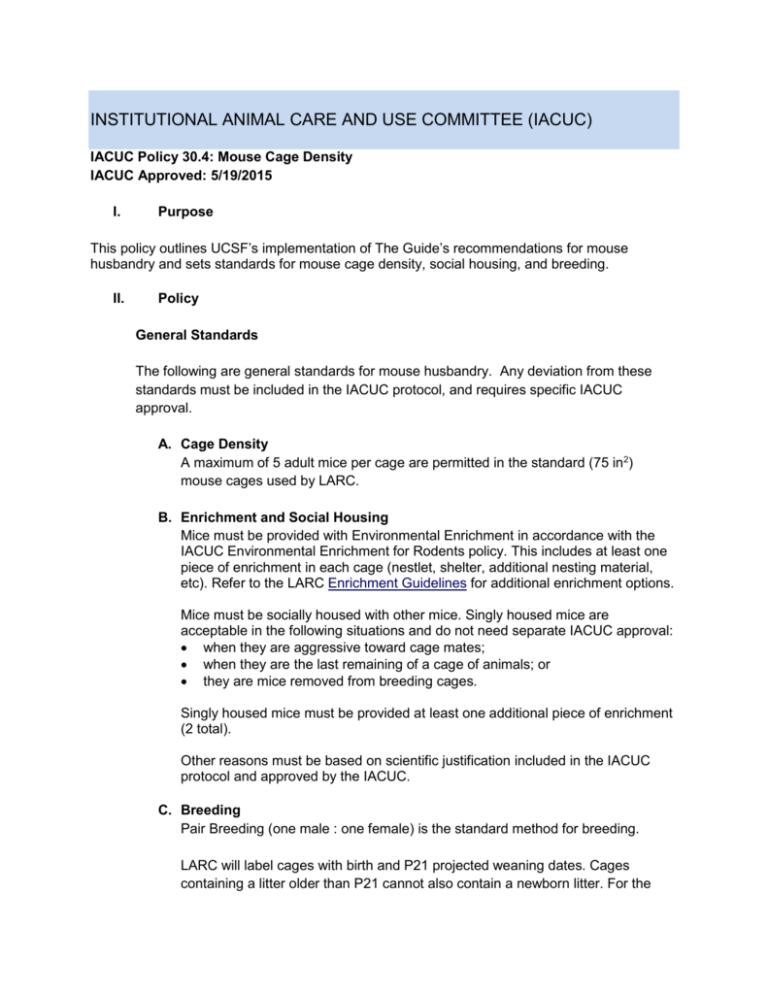
INSTITUTIONAL ANIMAL CARE AND USE COMMITTEE (IACUC) IACUC Policy 30.4: Mouse Cage Density IACUC Approved: 5/19/2015 I. Purpose This policy outlines UCSF’s implementation of The Guide’s recommendations for mouse husbandry and sets standards for mouse cage density, social housing, and breeding. II. Policy General Standards The following are general standards for mouse husbandry. Any deviation from these standards must be included in the IACUC protocol, and requires specific IACUC approval. A. Cage Density A maximum of 5 adult mice per cage are permitted in the standard (75 in2) mouse cages used by LARC. B. Enrichment and Social Housing Mice must be provided with Environmental Enrichment in accordance with the IACUC Environmental Enrichment for Rodents policy. This includes at least one piece of enrichment in each cage (nestlet, shelter, additional nesting material, etc). Refer to the LARC Enrichment Guidelines for additional enrichment options. Mice must be socially housed with other mice. Singly housed mice are acceptable in the following situations and do not need separate IACUC approval: when they are aggressive toward cage mates; when they are the last remaining of a cage of animals; or they are mice removed from breeding cages. Singly housed mice must be provided at least one additional piece of enrichment (2 total). Other reasons must be based on scientific justification included in the IACUC protocol and approved by the IACUC. C. Breeding Pair Breeding (one male : one female) is the standard method for breeding. LARC will label cages with birth and P21 projected weaning dates. Cages containing a litter older than P21 cannot also contain a newborn litter. For the welfare of a newborn litter, LARC staff is authorized to separate litters into new cages on a recharge basis when two generations of pups are present. D. Weaning Litters must be weaned by P21 and separated into same sex cages unless the litter contains small sized pups that may not be successfully weaned at P21. If the litter contains small pups, the cage must be labeled with the new expected weaning date. Breeding pairs often breed during post‐ partum estrus (immediately following parturition) so pairs with litters near weaning age must be monitored closely for the arrival of a new litter. Ideally, the current litter should be weaned just prior to the birth of the new litter; however, if the new litter arrives early, the older litter must be weaned; even if it is not yet 21 days old. Alternatively the new litter can be euthanized, either way the two separate litters may not remain in the same cage after discovery. Exceptions Any deviation from the above standards must be included in the IACUC protocol and approved prior to implementation. The following is a list of variations for which the IACUC has specific standards before approving an exception. Continuing approval is contingent upon a closely managed breeding program. The following may be requested in the IACUC protocol under ‘reportable exceptions.’ A. Trio Breeding (one male : two females) The IACUC will consider approval for trio breeding if: It is scientifically justified; It is not a strain or stocks that routinely has large litters (avg. 10+ pups); and Neonatal mice are bred for experimental use and will be euthanized by P12; or In all cases of trio breeding, the following requirement must be met: There is no limit on the total number of pups before day 12(of the younger litter), but after day 12 the cage must be culled to 12 pups. B. Extended Weaning Extended weaning (P22-P28) may be requested for strains that consistently require delayed weaning. The request should include scientific justification. If approved, the researcher must separate the female from the male during pregnancy to avoid breeding at the post-partum estrus. If, however, the strain’s fertility is such that a subsequent pregnancy is often delayed by several days or more, then the researcher may leave the male in the cage. If either female delivers a second new litter, both older litters must be weaned or alternatively the new litter may be euthanized, either way the new litter may not remain in the same cage with the older litters after discovery. C. Harem Mating (1M:4F) For harem mating, females must be separated prior to parturition, i.e. no litters may be born in a harem mating cage. III. References (A list of authorities relied on for the policy, either UC, UCSF or Regulatory documents, generally) a. The Guide for the Care and Use of Laboratory Animals, 8th edition. UCSF IACUC Guideline on Weanling Care
